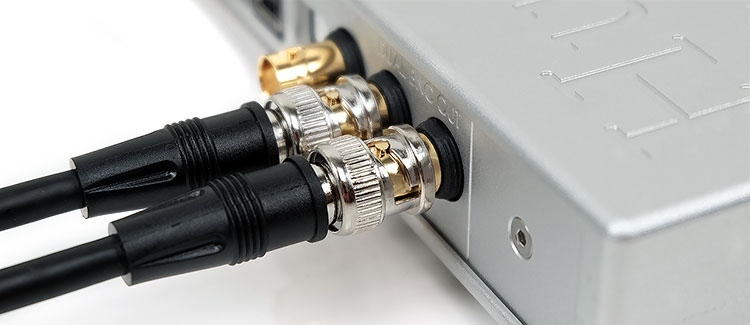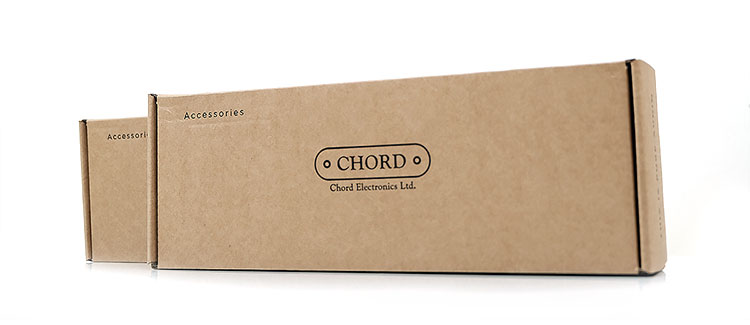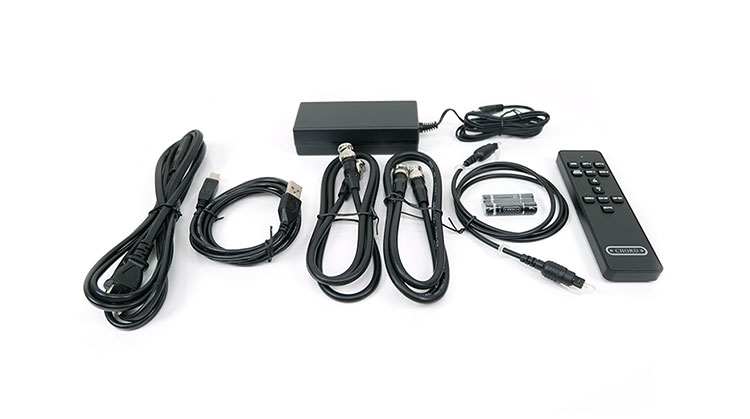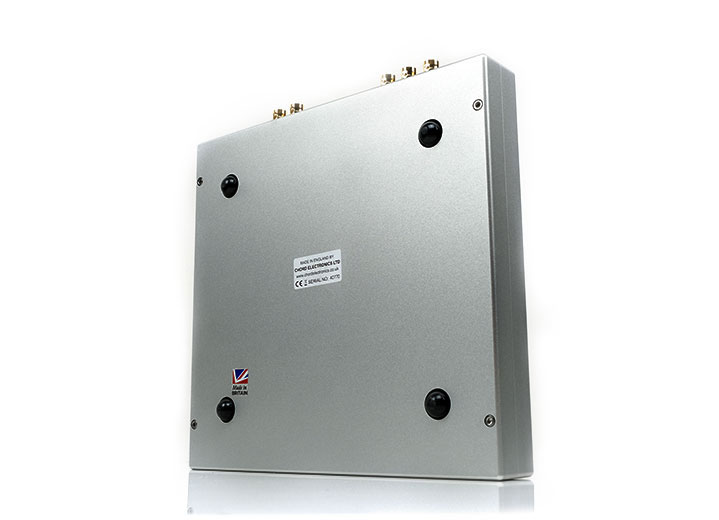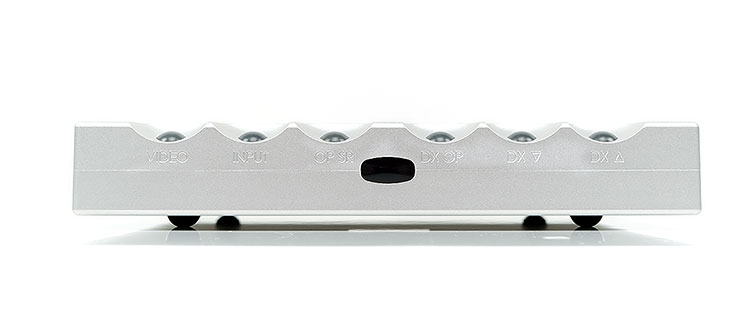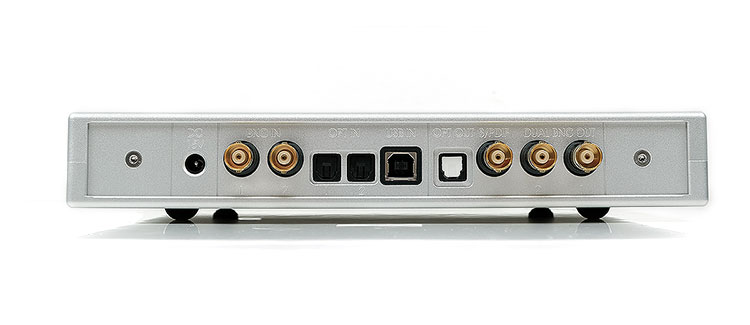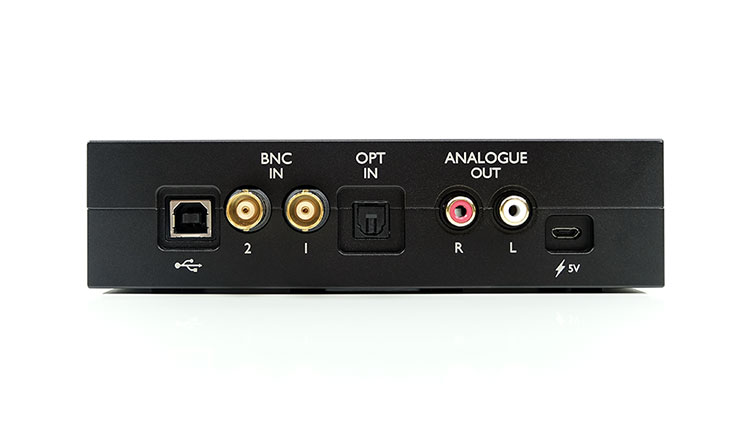This is our initial impression and introduction to the new Chord Electronics Hugo M Scaler which is a modular high-end upsampling audio system. It is priced at £3495.
Disclaimer: The Chord Electronics Hugo M Scaler sent to us is a sample in exchange for our honest opinion. We thank the team at Chord Electronics for giving us this opportunity.
You can read more about Chord Electronics products we previously featured on Headfonics by clicking here.
This is a product review I have been looking forward to more than most. I am fairly skeptical about upsampling previously with a general opinion that quite often the results on digital audio is, well, too “digital sounding”.
However, after having a listening session with the M Scaler and speaking to the Chord Electronics guys at CanJam Singapore 2019 I walked away feeling rather excited by the potential it could offer.
Not just to high-end systems, though it is likely where I suspect the majority of the bought units will end up given the price of £3495. Not even just tethered to their excellent Hugo TT2 which is the natural bedfellow to the M Scaler.
Rather, applying the M Scaler to any ‘run of the mill’ 44.1K 16BIT audio with any non-Chord Electronics DAC might work rather well and avoid that all too ominous overly digitized sound that upsampling, til now, likes to produce.
What Is It?
Upsampling
The background to the M Scaler is a long one and perhaps best left to the full review. In short, it is a standalone upscaling device that acts as the first port of call for any digital audio source or transport such as a laptop or CD Player before moving the resulting upsampled digital signal to the DAC of your choice for decoding into analog.
This is not an entirely new line of technology from Chord Electronics either but it is officially Rob Watt’s most advanced version at the time of writing. The upsampling technology first saw the light of day on their flagship BLU MKII digital/CD transport launch a year or two ago.
The M Scaler uses a complex Xilinx XC7A200T FPGA with 740 DSP cores to create WTA (Watts Transient Alignment) filtering capable of upsampling digital streams from 44.1k up to 705.6kHZ (maximum of 768kHz).
The M Scaler is also not tied to any single source such as a CD player so it can be attached to any compatible transport and DAC. It has the functionality to pair with any USB-capable output such as a laptop but ideally, it works best with a Chord Electronics DAC for a few reasons.
Dual BNC
That is not just sales speak. Whilst you can link the M Scaler to any DAC and we will be testing that in the full review, the inclusion of dual BNC connectors means you can directly link 2 BNC cables to the likes of the DAVE and the Qutest (which we have here) and both will recognize the M Scaler and respond accordingly.
A dual BNC connection will also give you the highest rate of sampling possible at PCM 768kHz (from 96kHz input). Other single BNC DACs will tap out at PCM 352.8 kHz.
Of course, you are not limited to BNC input and outputs with the M Scaler. You can also use an optical and coaxial output as well as 2 optical inputs giving you the potential to link up to 4-5 different sources to the M Scaler and upsample and output to 3-4 different DACs.
Unboxing
Nothing fancy here really, it is more of a traditional Hi-Fi style unboxing experience with a plethora of brown cardboard and gridwork foam bars protecting both the unit and the accessory boxes for transportation. You will not find anything ‘Hollywood’ with the M Scaler unboxing experience.
Accessories
The accessory line-up for the M Scaler comes in two plain brown rectangular boxes and is packed with all the essentials to get the M Scaler up and running. More than that they include a couple of BNC coupler-terminated cables which means you can hook up your TT, Qutest, or DAVE right away for maximum performance.
The full accessory lineup is as follows:
- 1.5m 15v 4A Switching power supply
- IR Remote Control (with 2 non-rechargeable Chord Electronics branded batteries)
- Dual BNC Cables
- M Scaler User Manual
- USB Cable
- Optical cable
Hang onto that remote. In our testing to date, the remote has been excellent. A product like the M Scaler, whilst not exactly being tucked out of sight is rarely something I want to continually walk across the room or reach for to change sample rates or inputs during listening. The remote takes care of everything for that couch potato lifestyle that we audiophiles wholly embrace.
Design
The M Scaler is unmistakably a Chord Electronics product. There is a certain ethos, design flow if you will, for any Chord Electronics gear from the Mojo up to the DAVE and the M Scaler is no different.
Well, it has to be that way to fit neatly on top of a TToby or TT2 which is how the team has envisaged this all comes together. For those that are coming from a Hugo or Hugo 2, it is a bit like having a giant version of that design, the two are not that far off.
It is also extremely solid with high build quality on initial impressions. The silver-finished chassis, much like the Hugo 2 is carved from an aluminum block and consists of two parts adorned with 4 rubber feet on the base and held together with 4 discreet screws.
The front houses the same color orb scheme as Hugo 2 also, although on a more complex level. From left to right there are options for Video filtering, input selection, and sample rate as well as 3 DX choices which only come alive when they receive a sample rate (DX OP) or, as Chord Electronics has alluded to when connected to future product lines that have yet to be revealed.
Just a note on the video filtering feature. You will not get quite the optimal tap length and sample rate output using video because of the latency inherent in the upsampling process.
The video feature thus lowers the sampling marginally to achieve a proper sync with audio and video from your source file. Having tried that using YouTube and can confirm it does exactly that.
Orbs
One other function, and one that Chord Electronics product users often find necessary is the ability to dim those orb lights. You can dim or enhance the orb light strength via the last two DX buttons. Generally speaking, I tend to take them all the way down so they do not distract me when watching a movie or streaming.
The Orb light sequence works in much the same manner as the Hugo or Qutest and with dual BNC I have found our Qutest to match the color sequences of the M Scaler, particularly for sample rates which is very assuring.
Rear
The rear panel is more of a traditional hi-fi design rather than the inset Hugo 2 style which I do like. Mind you it is not really possible to inset BNC connections and there are 5 coaxial sockets for that, with 4 dedicated for BNC (input and output) and one for SPDIF (output).
The Hugo M Scaler does use a switching 15V/4A SMPS power supply but I am told the power demands are not that high for a desktop product.
In the middle, you have 3 optical ports, 2 for input and 1 for output, and a single USB socket for receiving a digital signal from the likes of your PC or other digital audio transport.
This is my first time working with BNC cables but I am impressed with their locking mechanism. Just a simple push, twist and release and it grips tight. the cables also seem pretty sturdy though not terribly long so you do need your partnering DAC fairly close.
Functionality
The Chain
The Hugo M Scaler is designed to be the first stop from whatever digital audio source you are using and before the source is decoded to analog by a DAC. The setup is entirely up to you and the system you have, for example, server, PC, etc.
We have opted for a Windows 10 Lenovo Legion PC with access to music in FLAC from 44.1K up to DSD512 as well as a selection of video streamed or on external storage. From the Qutest we have initially connected to the Auris HA-2SE but we will be switching to a few more amps both solid state and tube in our full review.
From there, its been largely the excellent Diana Phi or Hifiman’s Susvara which are two headphones I believe can best capture the way the M Scaler changes the presentation.
We do have one other highly capable upsampling device, the NuPrime CDP-09, which we will definitely be comparing the M Scaler to in the review.
We will also be changing the DACs to a Hugo 2 via the M Scaler’s optical and coaxial output just to see if the performances of the Qutest and Hugo 2 will remain the same from our original reviews or if will there be some differences with the M Scaler attached.
Initial Performance Impressions
What To Look For
Normally, I would say sound impressions but here I think performance is more adept at describing the initial thinking after the first few days with the M Scaler.
The enhancements fundamentally lie in the technical domain but that is not to say timbre is not affected. Rather, this is unlike a PMEQ or EQ effect, it is not a bludgeoning tool to completely change the tuning bias of any particular source or amp output.
Your system’s level of dynamic range and how well you know it, combined with just how resolving and adept your headphone is will also play a key role in appreciating what the M Scaler can do. I generally found the better the system the easier it was to hear how dramatic some of the changes were with the M Scaler inserted into the chain.
What We Are Initially Hearing
What will you possibly hear? I have to say two things stuck out for me when moving from the by-passed 44.1k red OP sample rate setting to the 784kHz white setting which has been the most dramatic difference.
The first is just how precise everything sounds without actually sounding digital. The red option keeps rates where they are for most of my music’s native sample rates. The general presentation sounds great at that level with the Qutest but with the M Scaler, everything sounded much more vivid.
You suddenly become far more aware of little nuanced details with imaging cues right on the edge of the stereo field that has a lot more ‘pop’ to them. It almost made the Qutest sound a little vague without the M Scaler which honestly is not fair at all on the Qutest because it is an awesome DAC but there you are.
The second is indeed the timbre. With the red by-pass, I felt the low end of my system take on a touch more body and warmth but also sounded softer in comparison to the White 784kHz upsampling setting.
The 784kHz setting via the M scaler sounded more reference-like but had a much more pleasing tone to the mids and treble. Not a wholesale timbre change but is much more refined in its delivery.
Stay Tuned!
There is a heck of a lot more to talk about here regarding the background to the Hugo M Scaler technology and Rob Watt’s 30-year quest and what taps are all about.
We will try to cover some of it in our main review but avoid this becoming a ‘white paper’ document. It is important to know why but TLDR tendencies might stifle further reading.
What you need to know now at this point is that the M Scaler really does something rather interesting and enjoyable to your digital audio and in the hands of a very capable digital audio setup, it has the ability to really take listening to your tracks to a very high and rewarding level indeed. Stay Tuned!
Chord Electronics M Scaler Specifications
- PGA: Xilinx XC7A200T
- Filter tap length: 1,015,808 WTA taps
- Dimensions: 235 x 40.5 x 236mm (WxHxD)
- Weight: 2.55kg


